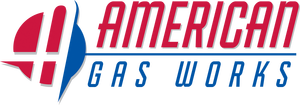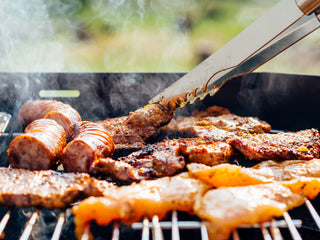For many the Barbecue Season is here! Let's stay safe by following just a few simple tips.
Propane Cylinders
- Do not force too much propane into an LP cylinder. Check your local laws. You may find that a 20-pound cylinder should be filled only to 80% of capacity. This leaves some room for the liquid to expand. DO NOT ask the propane supplier to overfill the cylinder!!
- Once the LP cylinder is connected, the grill must be kept outside in a well-ventilated space. When not in use, the LP cylinder valve must be turned to the OFF position (clockwise).
- If storing the gas grill indoors, the LP cylinder MUST be disconnected, removed, and stored outdoors. NEVER store an LP cylinder indoors.
- The cylinder valve outlet must be plugged whenever the cylinder is not connected to the grill or is being transported unless it is a quick close coupling or quick-connect type of cylinder valve. Follow manufacturer’s instructions for handling of cylinders.
- Always store LP cylinder upright and in areas where temperatures won’t exceed 120 degrees Fahrenheit. Never store a spare LP cylinder on or near a grill or any other appliance.
- Always check for gas leaks every time you disconnect and reconnect the regulator to the LP cylinder.
- Never attach or disconnect an LP cylinder, or move or alter gas fittings when the grill is in operation or is hot.
- Never use an LP cylinder if it shows signs of dents, gouges, bulges, fire damage, corrosion, leakage, excessive rust or other forms of visual external damage; it may be hazardous and should be checked by a liquid propane supplier.
- After a period of storage or disuse (such as over the winter), the gas grill should be checked for gas leaks, deterioration, proper assembly, and burner obstructions before using.
- Clean and perform general maintenance on the grill twice a year. Watch for rust, paint the LP cylinder to make it more rustproof, and check the regulator, hoses, burner parts, air shutter, and venturi/valve section carefully. Always turn off gas at the source (tank or supply line) prior to inspecting parts. Check owner’s manual for any additional maintenance requirements.
- Visually inspect hose(s) for abrasion, wear, and leaks before each use. A soap and water solution may be used to test for leaks. Never use a flame to check for gas leaks. Replace faulty hose(s) using a parts replacement kit before operating.
- When lighting a gas grill, always keep the lid open to prevent a flash off from gas build-up.
- Do not lean over the grill when igniting the burners or cooking.
If a burner doesn’t ignite, turn off the gas. Keep the grill lid open and wait five minutes before trying to light it again. If the burners go out during operation, turn all gas valves to OFF. Open the lid and wait five minutes before attempting to relight, using lighting instructions.
Tips taken from the Hearth, Patio and Barbecue Association - www.hpba.org

